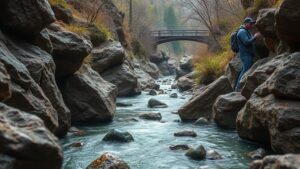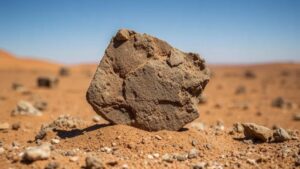Volcanic Glass Journeys: Exploring Obsidian Formations Across the Globe
Volcanic Glass Journeys: Exploring Obsidian Formations Across the Globe
For rockhounds and mineral collectors, the allure of obsidian–volcanic glass formed from rapidly cooled lava–cannot be overstated. Its striking appearance and unique properties have captivated enthusiasts for centuries. This article will delve into the origins, global occurrences, types, and practical tips for collecting obsidian, providing a comprehensive guide for both novice and seasoned collectors.
What is Obsidian?
Obsidian is a naturally occurring glass that forms when volcanic lava cools so quickly that crystals do not have time to develop. This igneous rock is characterized by its glossy surface and can come in various colors, including black, brown, green, and even rare rainbow hues. Obsidian is primarily composed of silica (about 70% or more), which gives it its glass-like properties.
Global Locations of Obsidian Formations
Obsidian can be found in various locations around the world, each type exhibiting its unique characteristics based on the mineral content of the lava and the cooling process. Here are some of the most notable locations:
- Hawaii: Known for its abundant obsidian, especially in volcanic areas like the Big Island. Some specimens exhibit a unique patterned texture called Peles hair, a fine, spinous glass that forms during explosive eruptions.
- Mexico: Famous for its extensive obsidian deposits, specifically in the region of Oaxaca. Mexican obsidian is often used to create sharp tools and weapons, given its excellent conchoidal fracture.
- United States: Notable sites include the Obsidian Cliff in Yellowstone National Park, with obsidian deposits that date over 1.8 million years. The eastern Sierra Nevada also hosts notable formations.
- Japan: Shikoku Island is known for producing high-quality obsidian known as Kuro-Tai or black obsidian, which has been mined for its aesthetic as well as functional properties in making tools.
- Italy: The volcanic landscapes of Sicily provide rich deposits of obsidian, historically essential for tool-making in ancient civilizations.
Types of Obsidian
Obsidian is more than just a black glass; it comes in various forms, each with distinctive features:
- Black Obsidian: The most common type, known for its deep black color and glassy surface.
- Snowflake Obsidian: Characterized by white or grayish spherules known as spherulites, resembling snowflakes.
- Mahogany Obsidian: A dark brown hue with reddish-brown speckles, this variety offers an attractive visual contrast.
- Rainbow Obsidian: Exhibits colorful sheen when viewed from different angles, often appearing dark from one perspective.
- Fire Obsidian: Typically found in lighter colors, this type displays iridescent colors that shine when cut and polished.
Practical Tips for Collecting Obsidian
For collectors eager to add beautiful and unique specimens to their collections, here are some actionable tips:
- Research Local Laws: Ensure you understand the regulations governing rock collection in your area. Many national parks and protected lands prohibit collecting to preserve natural habitats.
- Seek Out Gem Shows: Attending gem and mineral shows can provide access to unique specimens from varied locations, often with better provenance and education regarding their origins.
- Invest in Proper Tools: A geologists hammer, chisel, and safety goggles are essential for safely extracting pieces from their natural settings.
- Join Local Clubs: Many mineral collecting clubs offer field trips, access to private collecting sites, and a wealth of shared knowledge.
- Document Your Finds: Keeping a record of where and when you collected each piece can enhance the value and story behind your collection, making it more meaningful and educational.
Conclusion
Exploring the world of obsidian formations opens a portal to understanding Earths geological processes while offering an engaging pursuit for collectors. The intersection of beauty, utility, and history makes obsidian a fascinating addition to any mineral collection. By following these tips and expanding your knowledge about obsidian, you can deepen your appreciation for this remarkable volcanic glass and its global journey.



